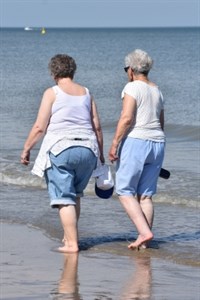- Home
- >
- What's New?
- >
- Latest research and news
- >
- Exercise and Menopause: What you need to know
NZ Register of Exercise Professionals media release: 23rd January 2018
 Keeping active throughout life is an important part of staying healthy, however as we age and at different stages of life, the type of exercise we engage in will need to change to suit us.
Keeping active throughout life is an important part of staying healthy, however as we age and at different stages of life, the type of exercise we engage in will need to change to suit us.
This is especially true for midlife women. With this age group experiencing the onset of perimenopause, and then menopause, there are some significant changes that can impact on health, energy levels, sleep and response to exercise. The World Health Organization measures midlife as beginning at 43 years for New Zealand women.
New Zealand based menopause and exercise specialist Dr Wendy Sweet has recently completed doctoral studies on women’s healthy ageing as they transition through their menopause years. Her findings suggest that although many women enjoy higher intensity workouts and have found them beneficial in the past, in their 50’s this may change with responses including increased muscle soreness, joint pain and increased fatigue post workout. If exercise selection does not change to fit these new symptoms then there is a risk of ceasing exercise all together.
Recent research undertaken with the Australian Longitudinal Women’s Health research reports that women in their 50’s are one of the highest population groups to stop being active. As Wendy explains, “No longer does a 'one-size fits all’ approach suit women as they transition into and through menopause”.
One of the questions Dr Sweet asked in her research was whether exercise was the ‘cure all’ we once thought for mid-life women. The answer is yes, but in moderation during menopause, because recovery from exercise is linked to other parts of a woman’s health profile including sleep quality, hot flush frequency and stress levels.
Wendy says, “The problem with many regular exercisers going into and through menopause, is that they have been exercising for years, and many have learnt to ‘push-through the pain’ of vigorous exercise, but in menopause, they shouldn’t. When women do this, then they increase one of their chronic stress hormones called cortisol and high levels of this hormone can disrupt both sleep quality and blood-sugar regulation, so many women end up putting on belly-fat despite all their devotion to exercise”.
Regular exercise is important for overall health and disease prevention, regardless of age and life stage with at least 30 minutes of exercise 5 days a week still being the gold standard. For midlife women experiencing symptoms of perimenopause and menopause this does not change. What may change is the intensity and volume of this exercise.
The news is good for those who are time poor. As little as 72 minutes a week can have benefits to health, however for many, once high volume and intensity is added many of these returns are diminished.
If you are experiencing symptoms in mid-life, or if you are experiencing changes in your exercise response, but are keen to keep active, it’s important to make sure you have the right information about what exercise suits you.
Menopause and its symptoms do not have to lead to reduced activity, as long as exercise is tailored to individual needs.
For exercise advice, always use a registered exercise professional, as they are qualified and experienced. This also means that they operate within a professional scope of practice, and if they can’t help you with a specific condition, they will make sure they refer you on to get the advice you need.
References:
Get more information on Dr Wendy Sweet's research:
- My Menopause Transformation.
- The connection between exercise and menopause (American Council on Exercise).

